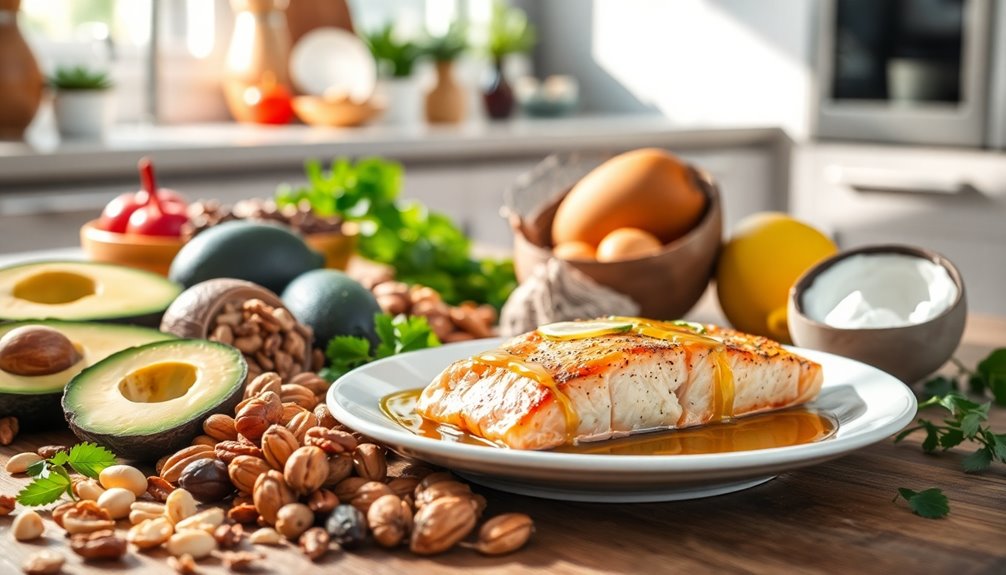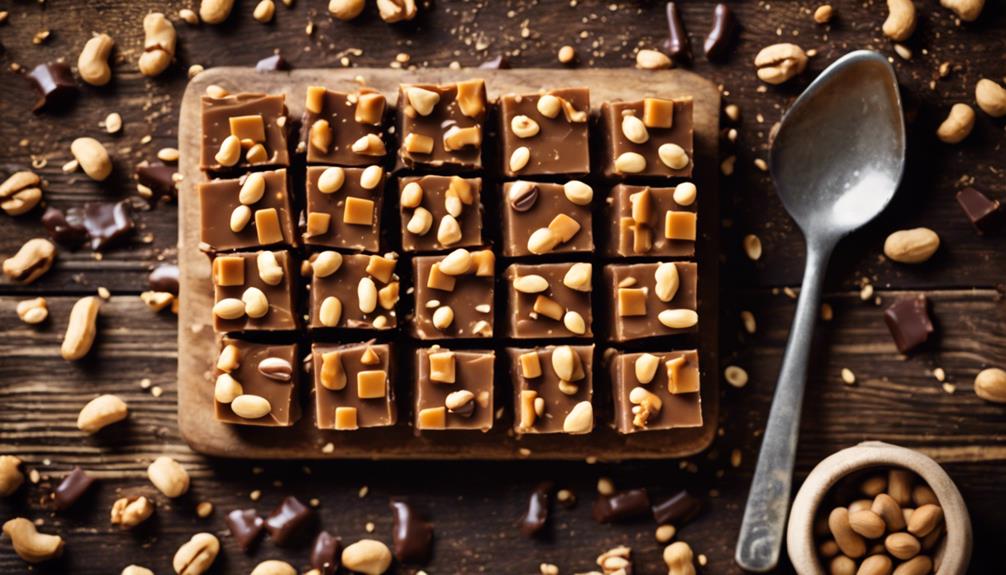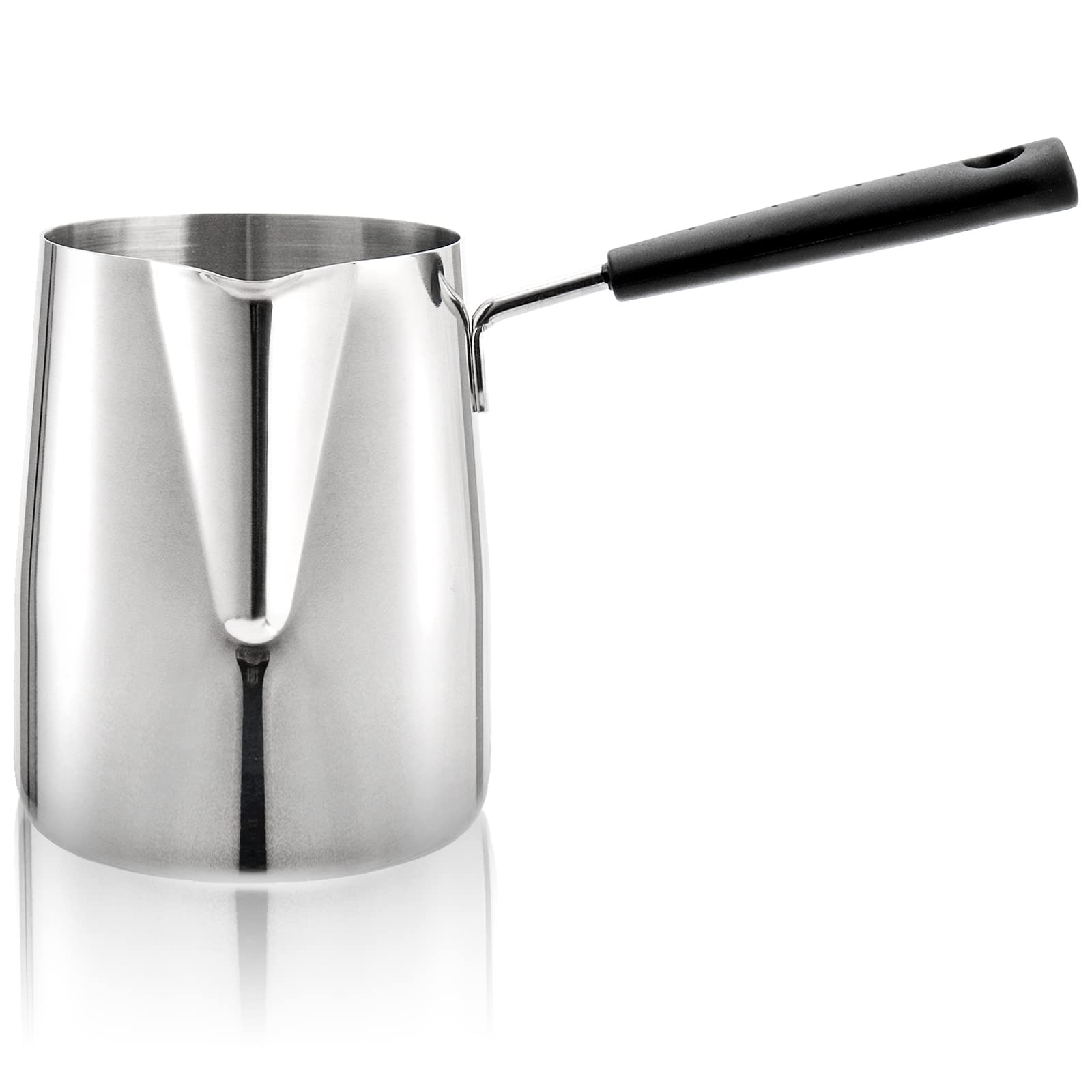Inside Sumo Personals, you'll uncover the intense training regimens, cultural dynamics, and unique body attributes that set champions apart. Each wrestler commits to grueling five-hour workouts, covering strength, cardio, and vital techniques. In the heya, or stable, the environment fosters discipline, respect, and teamwork, reinforcing sumo's rich traditions. You'll also learn about record-setting champions who've dominated the sport, pushing boundaries with their performance metrics and remarkable rivalries. This blend of traditional and modern influences shapes the thriving sumo scene today. If you want to know more about these champions' secrets, just stick around for the exciting details!
Key Takeaways
- Champions adhere to rigorous training regimens, incorporating strength, cardio, and technique to push their physical limits daily.
- The heya environment fosters discipline and respect, with lower-ranked wrestlers performing chores to uphold tradition and community spirit.
- Record-setting champions exhibit remarkable performance metrics, including high win rates and notable achievements that shape sumo's history and legacy.
- Cultural rituals and the role of the okamisan emphasize sumo's historical significance, preserving its unique traditions amid modernization.
- The global influence of foreign wrestlers enriches sumo, blending diverse heritages while maintaining core traditions essential to the sport's identity.
Training Regimen Insights
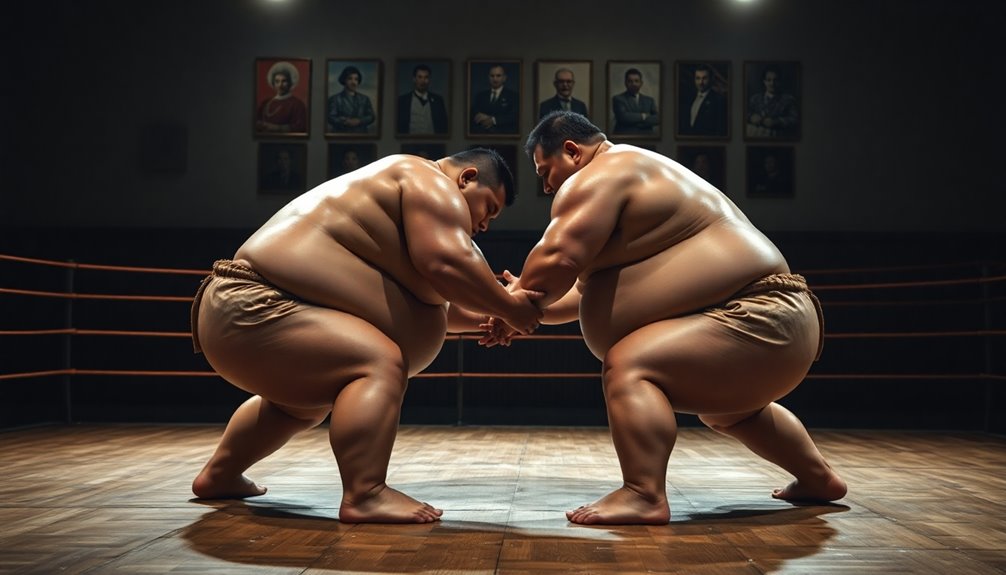
The training regimen of sumo champions is intense and meticulously structured, designed to build strength, endurance, and technique.
You'll start your day before dawn, engaging in five-hour training sessions that mix strength training, cardio, and technique practice. You won't eat breakfast before these sessions to avoid sickness, pushing your body to its limits right from the start.
Your exercises will include shiko, targeting your lower body with exaggerated stomping movements, and koshi-wari, where you perform sumo squats in a wide stance.
Flexibility is crucial, too, so you'll hold mata-wari leg splits for ten seconds. Suri-ashi will help you master sliding movements while maintaining a strong stance, and chiri-chozu will enhance your balance. Additionally, endurance training through rigorous cardio exercises like running, swimming, and cycling helps build the stamina necessary for your matches.
Strength training won't be overlooked; expect to do squats, deadlifts, and intense tachiai drills that replicate match scenarios.
This comprehensive approach ensures you develop the functional strength and energy levels needed to excel in the demanding world of sumo wrestling.
The Heya Environment
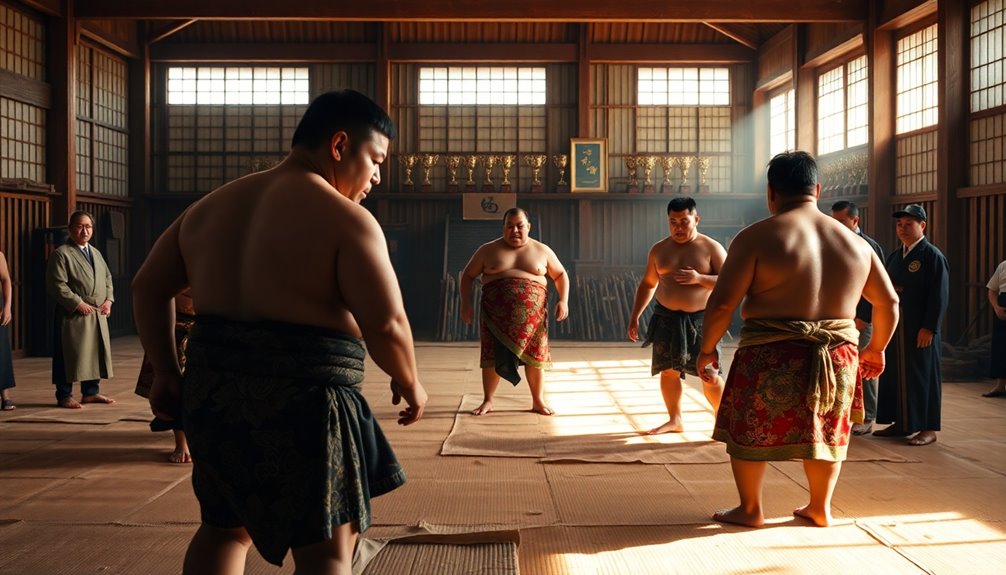
Living in a *heya* immerses you in a structured environment that's both demanding and supportive. Each stable operates like a small community where strict hierarchies dictate daily life. As a lower-ranked wrestler, you'll wake up early to handle chores, cooking, and cleaning, waiting for your higher-ranked peers. This hierarchy isn't just a routine; it's designed to instill discipline and respect.
The atmosphere resembles a quasi-monastic lifestyle, emphasizing teamwork and tradition. You'll likely find yourself adhering to rules about clothing, meals, and behavior, which fosters a sense of unity among your stablemates. Additionally, the practice of preserving the cultural significance of sumo through rituals highlights the deep-rooted history of the sport.
The *okamisan*, or stablemaster's wife, plays a vital role, managing daily operations and ensuring everything runs smoothly.
Living in a *heya* also means embracing the cultural significance of sumo. You'll participate in rituals that emphasize the sport's history, dating back to the Edo period.
Each day is a blend of physical training and cultural immersion, making the *heya* feel like an athletic temple. The camaraderie and shared experiences within this environment not only toughen you up but also prepare you for the rigors of competition in the ring.
Key Physical Attributes
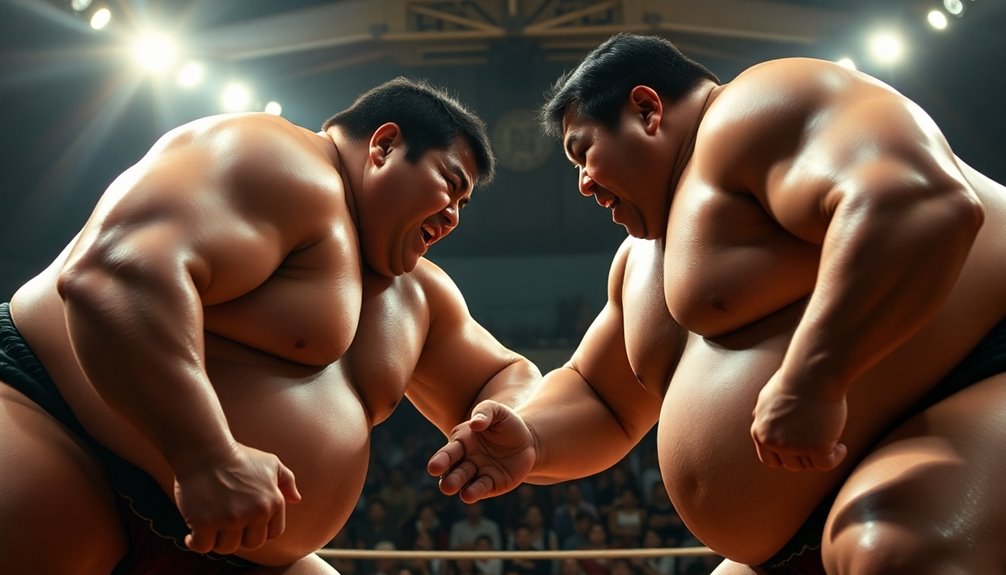
Key physical attributes play a crucial role in a sumo wrestler's success. You'll notice that the average sumo wrestler stands at about 180.2 cm, which is quite tall compared to the average Japanese. With an average weight of 122.3 kg, higher-ranking wrestlers typically weigh even more.
Their body shape is distinctive, characterized by a waist girth averaging 114.9 cm and hip girth at 115.7 cm, reflecting significant subcutaneous fat with an average skinfold thickness of 109.9 mm.
When it comes to body composition, a sumo wrestler has a high relative fat mass, averaging around 24.8% to 26.2%. Interestingly, their fat-free mass averages 83.3 kg, significantly surpassing that of untrained individuals.
Despite their size, sumo wrestlers' strength is specialized; they generate high force during specific movements like knee extensions but show lower performance in functional tests such as vertical jumps. Furthermore, the higher-ranking wrestlers exhibit superior body weight and circumferential measurements, which contributes to their competitive edge.
While their vital capacity is relatively low at 4918.6 ml, they display comparable flexibility and response times to other athletes.
Record-Setting Champions
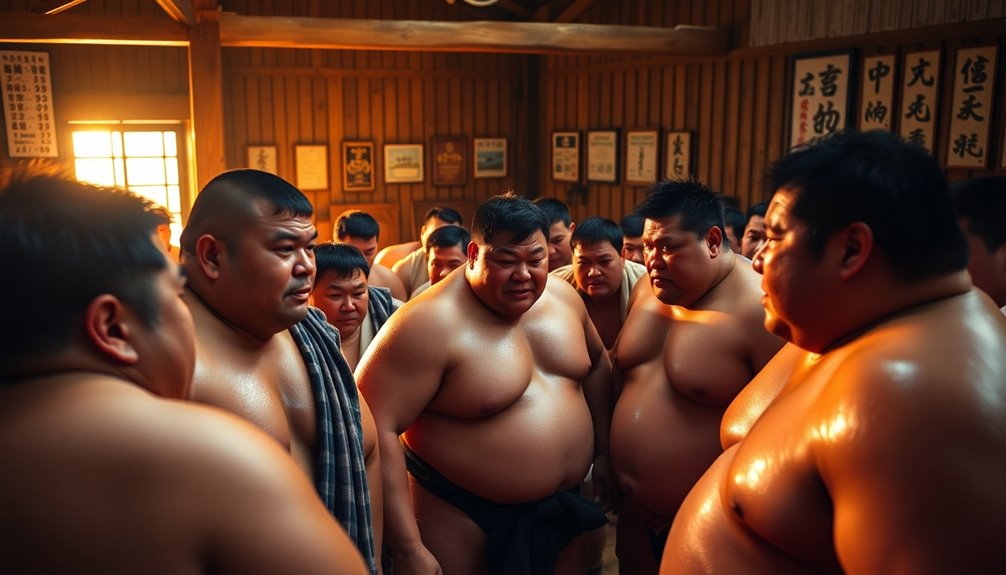
Setting records in the world of sumo requires not just talent but also relentless dedication and skill.
You'll find that few athletes exemplify this better than the remarkable yokozuna who debuted in March 2001. By May 2004, he reached the top makuuchi division and, just three years later, became yokozuna at the young age of 22. Holding this prestigious rank for an impressive 14 years, he retired in September 2021 after a storied 20-year career.
His record-breaking achievements are astounding. With the most top division championship wins at 45 and an unparalleled 1,093 total wins, he's set the bar high. You can't overlook his remarkable streak of 16 undefeated championship wins or his reign as the longest-serving yokozuna across 84 tournaments. Notably, he also achieved a career total of 1,187 matches won, a record in professional sumo.
His legacy includes intense rivalries, notably with Asashoryu, and monumental victories that shaped his career.
He's not just a champion but a symbol of excellence in sumo. Now, as an instructor at the Miyagino stable, he aims to nurture the next generation of wrestlers, ensuring his impact resonates in the sport for years to come.
Competitive Performance Dynamics

The world of sumo isn't just about record-breaking champions; it's also shaped by the intricate dynamics of competitive performance. You'll find that success hinges on the ranking and tournament structure, which is determined by bimonthly tournaments called honbasho. With six official tournaments each year, matchups are carefully curated by sumo elders based on prior performance, ensuring that you face opponents from similar divisions.
However, the dynamics extend beyond the ring. Wrestlers often grapple with economic and moral incentives, where higher-ranked athletes might be bribed to lose, allowing lower-ranked wrestlers to advance. This isn't just about personal gain; there's a strong social pressure to support fellow wrestlers, fostering community harmony. Additionally, the influence of economic theories can be seen in how wrestlers with a 7-7 record frequently win their final bout to advance.
Physically, you need significant body mass and strength to compete effectively. Training involves rigorous sessions focused on building muscle, utilizing high-calorie diets like chanko nabe. You'll also master 82 recognized techniques while avoiding prohibited moves.
Lastly, performance metrics, including pushing opponent tests, play a crucial role in assessing your skills and progress. Understanding these competitive dynamics is key to navigating the sumo landscape and achieving your goals.
Modern Champion Profiles

Modern sumo champions represent a diverse array of backgrounds and fighting styles, showcasing the sport's evolution.
Take Onosato, for instance. At just 24 years old, this Japanese wrestler stands at 192 cm and weighs 182 kg. He's already clinched two top division championships, proving his skill and determination. His rapid rise to Ozeki rank within 18 months of his second championship highlights his extraordinary talent.
Then there's Kirishima, a 28-year-old from Mongolia. Competing out of the Otowayama stable, he's 186 cm tall and weighs 147 kg. Kirishima recently captured the Emperor's Cup in November 2023, adding to his collection of two championships.
Terunofuji, also from Mongolia, is a remarkable 33 years old. Standing 192 cm and weighing 176 kg, he's achieved an impressive ten top division championships and became the 73rd Yokozuna in 2021, overcoming significant health challenges.
Lastly, Shishi represents Ukraine as the first professional sumo wrestler from his country. At 27, he boasts a height of 193 cm and weighs 171 kg. His long reach and powerful throwing techniques have already earned him promotion to the top division in September 2024.
Each champion adds a unique chapter to sumo's rich narrative.
Training Techniques Explained

When it comes to mastering sumo, training techniques play a pivotal role in a wrestler's success. You'll need to focus on various exercises that build strength, flexibility, and endurance.
Start with Shiko, where you lift one leg at a time to target your thighs and hips, repeating this up to 200 times. This not only enhances explosive power but also helps prevent injuries.
Next, incorporate Koshi-Wari to strengthen your legs through sumo squats, essential for maintaining your low stance and balance.
Don't forget about Mata-Wari; holding a full leg split improves your flexibility and range of motion, critical for agility in the ring.
Suri-Ashi will enhance your footwork by sliding your feet while keeping them grounded, ensuring you maintain a strong stance during matches. Additionally, practicing these movements regularly promotes flexibility and balance, which are vital for adapting to opponents.
For overall conditioning, engage in endurance training through cardio exercises like running and swimming, alongside weight training to build functional strength.
Lastly, incorporate flexibility and balance exercises to keep your body adaptable. Emphasizing these techniques will prepare you for the challenges of the sumo ring, paving your way to success.
Global Influence of Sumo

Mastering the art of sumo doesn't just happen in the ring; it also involves understanding its growing global influence. Foreign wrestlers have become integral to the sport, especially since the late 20th century, when competitors from Hawaii like Takamiyama and Akebono paved the way for others. Wrestlers from Mongolia, Bulgaria, and Georgia have also made their mark, challenging the traditional notions of sumo. The Japan Sumo Association has faced the reality of this shift, with initial restrictions on foreign participation now proving less effective as their presence continues to grow.
Through international tournaments and exhibitions, sumo has garnered global recognition, attracting diverse fan clubs and introducing the sport to new audiences. Cultural exchange has flourished, as American wrestlers blend their heritage with Japanese traditions, sparking conversations about sumo's identity. Notably, the success of these foreign wrestlers has helped internationalize sumo, drawing attention from fans around the world.
However, the increasing dominance of foreign wrestlers raises questions about preserving the sport's traditional character. Balancing modernization and inclusivity with cultural legacy is vital for sumo's future. Embracing this global influence not only enriches the sport but also ensures that sumo remains relevant in a rapidly changing world.
Frequently Asked Questions
What Mental Strategies Do Sumo Wrestlers Use During Competitions?
During competitions, you'll find sumo wrestlers rely heavily on mental strategies. They visualize matches beforehand to stay calm and focused.
By reading their opponents' signals and weaknesses, they adapt their tactics on the fly. Engaging in psychological warfare, they create uncertainty and manipulate reactions.
Maintaining composure under pressure is crucial, and daily practices like meditation help build resilience. Rituals and reflection on past bouts further strengthen their mental game.
How Do Wrestlers Recover From Injuries Sustained in Matches?
When you recover from injuries sustained in matches, you focus on rest and rehabilitation.
You'll likely follow a structured plan that includes physical therapy and proper medical care.
It's essential to warm up and cool down to prevent future injuries.
You might also rely on your coach's guidance to learn safe techniques.
If you experience serious injuries, like fractures or dislocations, you'll need professional help to ensure effective healing and a safe return to competition.
What Dietary Practices Support a Sumo Wrestler's Training?
To support your training as a sumo wrestler, you'll skip breakfast, training on an empty stomach to boost hunger.
Your first meal around 11am will be massive, about 10,000 calories, featuring chankonabe, rice, and noodles.
After a long nap, you'll eat another large meal in the evening.
You'll focus on lean meats, vegetables, and drink beer for extra calories, all while avoiding processed foods to maintain your health.
How Do Wrestlers Maintain Their Weight Throughout the Year?
Wrestlers maintain their weight by consuming a high-calorie diet and training rigorously.
You'll notice they eat large meals, often just twice a day, which helps slow metabolism and promote weight gain.
They incorporate protein-rich and starchy foods while skipping breakfast to train on an empty stomach.
Post-meal rest aids in converting food into bulk.
This combination of diet and intense training allows them to manage their weight effectively throughout the year.
What Is the Significance of Rituals in Sumo Wrestling Culture?
Rituals in sumo wrestling culture hold deep significance, emphasizing purity, respect, and a connection to Shinto beliefs.
As you witness the salt scattering, mouth rinsing, and ceremonial movements, you see wrestlers preparing both physically and mentally.
These actions not only cleanse the ring but also demonstrate fairness and honesty.
The rituals engage you as an audience member, creating an atmosphere of anticipation and respect, highlighting sumo's rich cultural heritage and spiritual roots.
Conclusion
In sumo wrestling, you've seen that champions aren't just made in the ring; their journey involves rigorous training, a unique environment, and key physical attributes. Understanding their secrets reveals the dedication and strategy behind their success. As you explore the world of sumo, remember the modern champions are shaping the sport's future while honoring its rich traditions. Whether you're a fan or a budding wrestler, there's always something new to discover in this fascinating realm!

